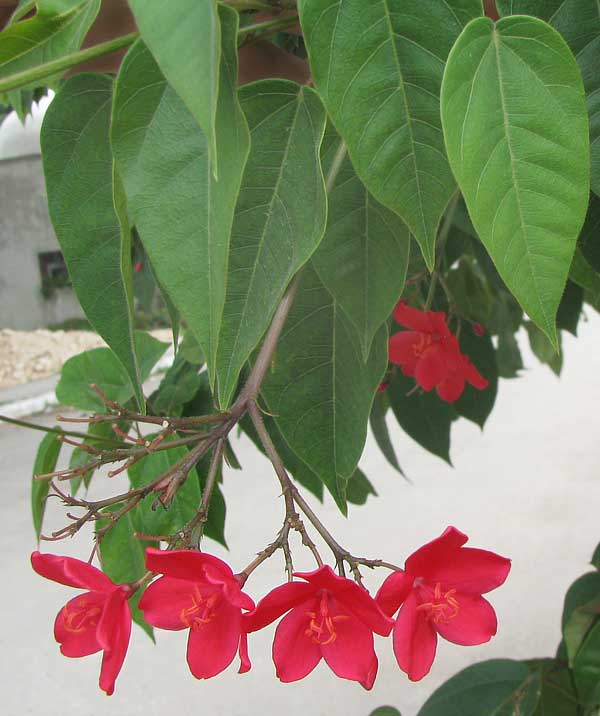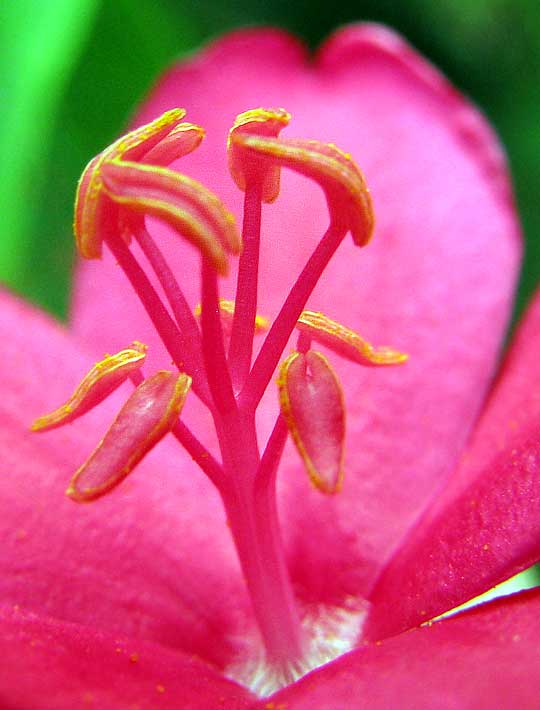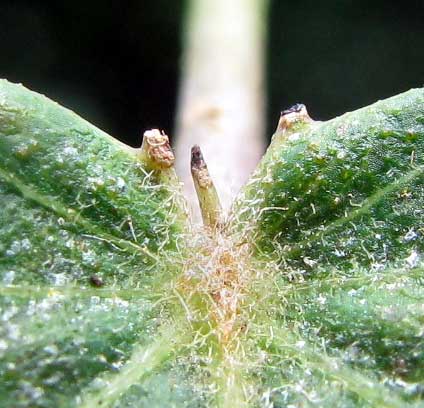Excerpts from Jim Conrad's
Naturalist Newsletter

from the September 12, 2010 Newsletter issued from Hacienda Chichen Resort beside Chichén Itzá Ruins, central Yucatán, MÉXICO; limestone bedrock, elevation ~39m (~128ft), ~N20.676°, ~W88.569°
"PILGRIM" IN RED
Once again biking Pisté's backstreets has paid off in terms on discovering a gorgeous plant completely new to me. This time it was a streetside bushy tree about 15 feet tall (4.5 m) with alternate, ovate leaves, and with the inch-wide (2.5 cm), red flowers shown above.
What was encountered inside each blossom was surprising and beautiful, and you can see it yourself below:

Those are ten stamens with their matchstick-like filaments joined into a column, almost as in the Hibiscus Family. Each stamen is topped by a long anther splitting along both its edges to release yellow pollen. Another striking feature of the flower is that there's no hint of female parts -- no pistil with its stigma, style and ovary. This is a unisexual male flower.
Examining a leaf, where the blade attached to its petiole, there were stalked glands shown below:

Unisexual flowers, glandular herbage and more-than-normal juice exuding from the wound where the leaf broke of... and already I was getting an idea of which plant family the tree probably belonged too: Surely it was the Euphorbia Family, the Euphorbiaceae, in which also are found Poinsettias, Castor Bean, and Manioc.
By using the thumbnail image feature of Google and searching on the keywords "Euphorbiaceae red flowers," it wasn't long before I found a match. The pretty tree in Pisté is known to the English speaking world as Peregrina, Spicy Jatropha, and other names. In Spanish "peregrina" is the feminine form of the word "pilgrim." It's JATROPHA INTEGERRIMA, a native of the West Indies, and especially well known in Cuba.
At first I was uncertain about the ID because many images of the species on the Internet show leaves with very different shapes. Finally I read that the leaves are extremely variable, ranging in shape from oval to elliptic, to even longish and fiddle-shaped. Also, all the leaves in my picture are unlobed, but larger leaves on older branches sometimes bore three low, sharp-pointed lobes.
In southern Florida Peregrina has escaped from cultivation so now it even grows in the US. Many Internet pictures of the tree have been taken in Hawaii so it must be a favorite garden plant there, too.